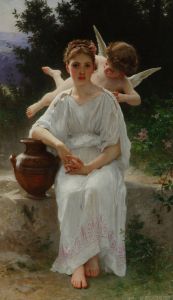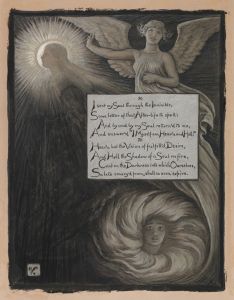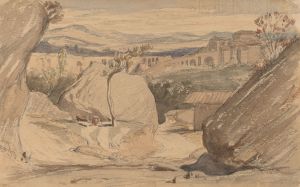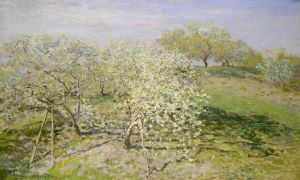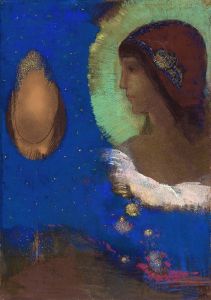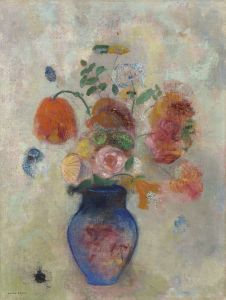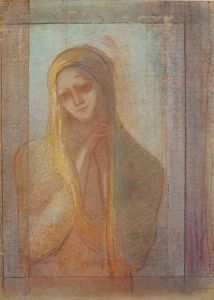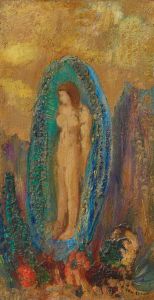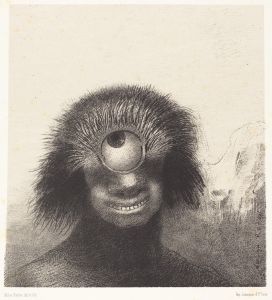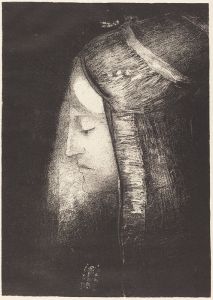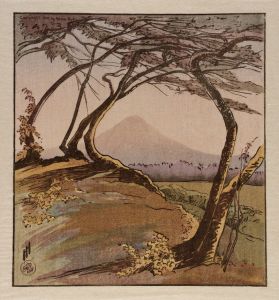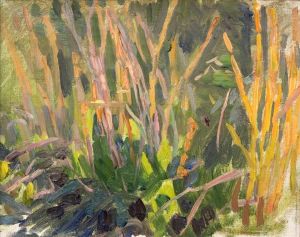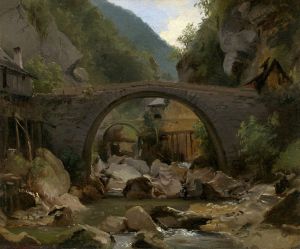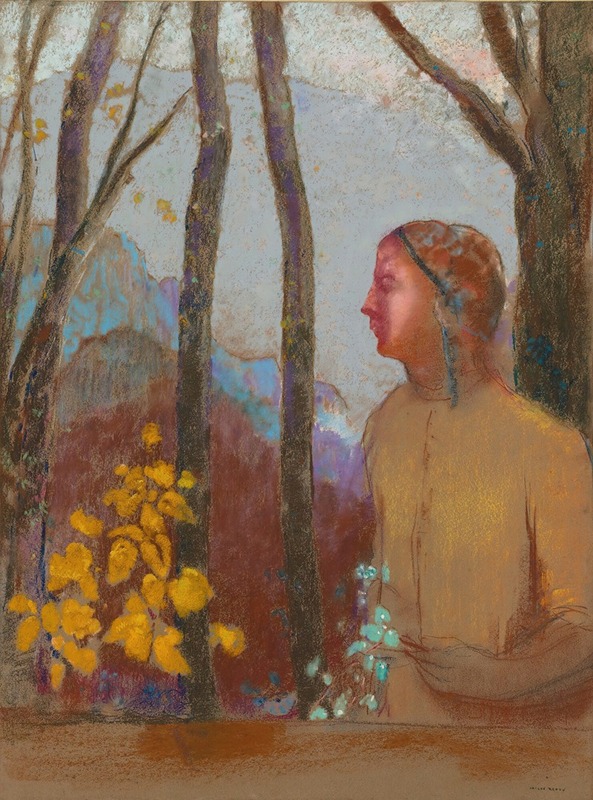
Évocation
A hand-painted replica of Odilon Redon’s masterpiece Évocation, meticulously crafted by professional artists to capture the true essence of the original. Each piece is created with museum-quality canvas and rare mineral pigments, carefully painted by experienced artists with delicate brushstrokes and rich, layered colors to perfectly recreate the texture of the original artwork. Unlike machine-printed reproductions, this hand-painted version brings the painting to life, infused with the artist’s emotions and skill in every stroke. Whether for personal collection or home decoration, it instantly elevates the artistic atmosphere of any space.
"Évocation" is a painting by the French symbolist artist Odilon Redon. Created in 1912, this work exemplifies Redon's unique approach to art, characterized by his use of dreamlike imagery and a deep exploration of the human psyche. Redon, born in Bordeaux in 1840, was a pivotal figure in the Symbolist movement, which sought to express the emotional and intellectual experiences of the human mind through symbolic and often fantastical imagery.
The painting "Évocation" is notable for its ethereal quality and the use of soft, muted colors that create a sense of otherworldliness. Redon often employed pastels and oils to achieve a delicate, almost translucent effect in his works, and "Évocation" is no exception. The composition features a central figure, often interpreted as a spiritual or mystical presence, surrounded by an array of abstract and floral forms. This central figure appears to be in a state of contemplation or meditation, evoking a sense of inner reflection and tranquility.
Redon's work is heavily influenced by his interest in literature, philosophy, and the natural world. He was particularly inspired by the writings of Edgar Allan Poe, Charles Baudelaire, and Stéphane Mallarmé, whose works often delved into themes of the subconscious and the supernatural. "Évocation" reflects these influences through its dreamlike atmosphere and the symbolic use of light and shadow.
The painting also demonstrates Redon's fascination with the interplay between reality and imagination. He believed that art should transcend the visible world and tap into the deeper, often hidden aspects of human experience. This philosophy is evident in "Évocation," where the boundaries between the real and the imaginary are blurred, inviting viewers to explore their own interpretations and emotions.
Redon's technique in "Évocation" is characterized by his meticulous attention to detail and his ability to create a sense of depth and movement within the composition. The delicate brushstrokes and the harmonious blending of colors contribute to the painting's overall sense of serenity and mystery. The use of light in the painting is particularly striking, with the central figure appearing to be illuminated from within, further enhancing the spiritual and contemplative nature of the work.
"Évocation" is housed in the Musée d'Orsay in Paris, which holds a significant collection of Redon's works. The museum's collection provides a comprehensive overview of Redon's artistic development and his contributions to the Symbolist movement. "Évocation" remains one of Redon's most celebrated works, admired for its beauty, complexity, and the profound sense of introspection it evokes.
In summary, "Évocation" by Odilon Redon is a masterful example of Symbolist art, reflecting the artist's deep engagement with themes of spirituality, imagination, and the inner workings of the human mind. Through its dreamlike composition and delicate execution, the painting invites viewers to embark on a journey of introspection and contemplation, making it a timeless piece in the history of art.





